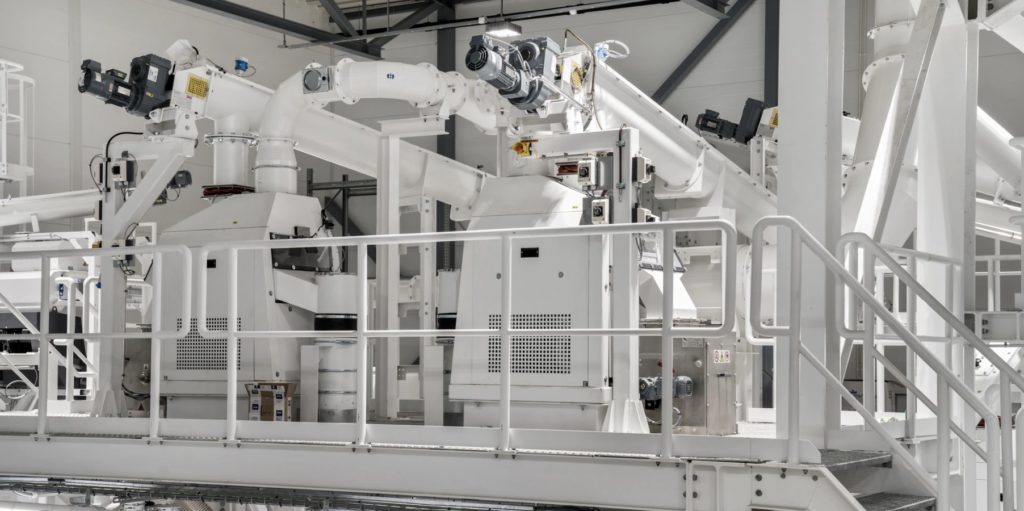BEVs dominate UK fleets but challenges persist, especially for LCVs
13 July 2022

Autovista24 senior data journalist Neil King considers the successes and challenges for battery-electric vehicles (BEVs) in the UK fleet sector.
The UK’s plug-in car grant (PiCG) was withdrawn on 14 June, but the electrification of the new-car market continued last month. Orders, however, can take months to translate into registrations as supply-chain and other issues continue to challenge the market.
Despite the 24% year-on-year contraction of the wider UK market, the volume of battery-electric vehicle (BEV) registrations grew 14.6% to gain a 16.1% share of the market in June, up from 10.7% a year earlier. This is second only to petrol cars, which still account for more than 50% of new cars registered in the UK.
The penetration of fully-electric cars is far greater in the crucial fleet sector, which is responsible for about 50% of all new cars registered in the UK. ‘BEVs already dominate the order books of our sector… and could meet the 2030 phase-out early. BEVs have overtaken petrol among British Vehicle Rental and Leasing Association (BVRLA) members, and this will remain assuming the government does not need to apply the handbrake, such as a change to the Benefit in Kind (BiK),’ said Gerry Keaney, chief executive of the BVRLA, at the association’s Fleets in Charge conference on 7 July.
However, the pace of growth is decelerating and the termination of the PiCG, along with rising interest rates and inflation, will have a detrimental impact on BEV uptake in the UK’s new-car market and even the fleet sector. There are other challenges too, including the electrification of small cars, securing long-term battery supply, charging provision, and converting light-commercial vehicle (LCV) fleets to electric.
Small BEVs ‘the biggest challenge’
Back in 2019, Autovista24 analysis revealed that small BEVs were struggling to compete in terms of total cost of ownership (TCO) against their internal-combustion engine (ICE) rivals. Battery costs are too high to be absorbed at lower price points and, therefore, small BEVs cannot offer buyers a competitive TCO, even before any discounting of petrol and diesel counterparts is applied.
The challenge is even more pronounced for city cars as manufacturers need to add electric technology to meet EU CO2 targets. This means the industry’s smallest, A-segment, cars are becoming increasingly expensive, with prices approaching those of B-segment models that offer greater versatility. A case in point is the iconic Fiat 500, which is available as a BEV, but with B-segment pricing.
This presents carmakers with a conundrum as they seek to maintain profitability. There were already A-segment casualties back in 2019, and Stellantis has since withdrawn the Citroën C1 and Peugeot 108 from the European market.
James Taylor, director of B2B at Stellantis, echoed the concerns at the BVRLA event. ‘A solution for the small-vehicle segment is probably for me the biggest challenge. The PiCG removal makes it harder to explain prices, especially for small cars.’
Toyota has found a novel solution, by applying crossover treatment to the Aygo X, which serves as a replacement for the Aygo city car that was a sibling of the C1 and 108. There are no hybrid or electric powertrains available for the Aygo X, only a one-litre petrol engine. But the model’s larger size means it can command higher prices than its city-car peers and may accommodate electrified powertrains in the future.
Supply challenges on the horizon
As widely reported by Autovista24, and factored into our new-car registrations forecasts, supply is defining the market more so than demand. BEVs and fleets are not shielded from the supply constraints, but the industry is not entirely blameless either as it ‘eased back on supply agreements and consumer electronics piled in,’ John O’Hanlon, CEO of Waylands Automotive, acknowledged.
‘One brand is moving to ICE [sales] for the next six months because that is what we can supply. We are seeing more production go to the other markets,’ he added.
Supply is slowly improving, as reflected in growing new-car registration figures across Europe, but there are further challenges looming on the horizon as BEV uptake rises.
‘The focus on emissions has gone from ‘zero at the tailpipe to zero across the board,’ said Ian Constance, chief executive of the Advanced Propulsion Centre (APC), at the BVRLA conference.
He added that this is driving the need for localised gigafactories. ‘We are going to have to get to 50% local content in batteries to avoid tariffs between the UK and the EU. We are behind on cathodes and anodes, and Europe and the UK have not really got anything going on in LFP [lithium-iron-phosphate].’
‘It takes nine to 11 years to bring on lithium extraction, five years to develop a car. Making batteries at scale is challenging, especially as battery engineers are like gold dust,’ Constance added, reiterating a theme discussed at the recent SMMT Automotive Industry Summit.
Charging cars using on-street parking
Although the UK government has withdrawn the PiCG, the aim is that a £1.6 billion (€1.9 billion) injection of funds will help increase the number of public-charging points across the country to 300,000 by 2030. This would represent a 10-fold increase on the 30,000 currently available.
One hurdle is identifying the charging infrastructure needs of different parts of the country. Caroline Low, director of transport decarbonisation at the Department for Transport (DfT) concedes that ‘data about geography is not clear so we are sticking to a headline number’ but there is a focus on ‘connecting the number of cars that use on-street parking with chargers.’
‘Local authorities are taking a joined-up approach to find ways to massively and commercially scale up chargers and the infrastructure,’ Low added. There are also challenges in gaining access to the electricity grid, which can take months, if not years. And once operational, chargers need to be used, maintained, and profitable.
‘We need to make sure that chargers are commercially advantageous but that we are also offering a good deal to drivers. There is a long-term view on payback – it is not about every charge point working, it is about being able to pull up and charge,’ notes Alex Potts, sales director at BP Pulse, speaking at the BVLA event.
Electric vans ‘struggling to get out of first gear’
Just like the passenger-car market, there is an increasing push towards electrification in the LCV sector, particularly as fuel prices rise, but uptake is slow in comparison. BEV registrations amounted to 6,085 units in the UK in the first five months of 2022, accounting for just 5.2% of the overall LCV market. ‘Vans are even struggling to get out of first gear as there is a scarcity of the right sort of vehicles,’ Keaney notes.
The sector presents a significant development opportunity for electrification but, in addition to product scarcity, it must first overcome some serious obstacles such as charging times, infrastructure location, and logistical practicality.
‘A third of our fleet are taking vehicles home with nowhere to charge them. Half hour to the charger, half hour charging, and half hour back means a 90-minute loss of productivity. Hence, we are focusing on work in dense areas,’ commented Andrew Kirkby, senior manager, sustainability, at Open Reach.
Speaking to Autovista24, Kirkby added that ‘charging stations are not always suitable for vans because of their width and length.’ Charging vans at lamp posts in urban areas can be a source of irritation for residents too, and even dedicated charging bays are often inconvenient and not just because of their size. ‘OpenReach operates a no reverse-out policy, but charging points are often on the front of vans,’ Kirkby added.
However, Robert Gwynn, policy and public affairs manager at Volta Trucks, has commented that ‘multi-drop operation with back-to-base for charging makes the switch to electric much easier.’



